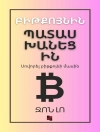Terrorism informatics has been defined as the application of advanced methodologies, information fusion and analysis techniques to acquire, integrate process, analyze, and manage the diversity of terrorism-related information for international and homeland security-related applications. The variety of methods used in terrorism informatics are derived from Computer Science, Informatics, Statistics, Mathematics, Linguistics, Social Sciences, and Public Policy and they involve the collection of a mass of information from multiple sources and in numerous languages.
TERRORISM INFORMATICS: Knowledge Management and Data Mining for Homeland Security will provide an interdisciplinary and comprehensive survey of the state-of-the-art of terrorism informatics domain along three basic dimensions: methodological issues in terrorism research; information infusion techniques to support terrorism prevention, detection, and response; and legal, social, privacy, and data confidentiality challenges and approaches.
Innehållsförteckning
Methodological Issues in Terrorism Research.- Domain Mapping of Contemporary Terrorism Research.- Research on Terrorism.- Who Are the Key Figures in ‘Terrorism Studies’?.- Interviewing Terrorists.- Resolving a Terrorist Insurgency by Addressing Its Root Causes.- A Quantitative Analysis of ‘Root Causes of Conflict’.- Countering Terrorism with Knowledge.- Toward a Target-specific Method of Threat Assessment.- Identifying and Exploiting Group Learning Patterns for Counterterrorism.- Homeland Insecurity.- Terrorism Informatics to Support Prevention, Detection, and Response.- Case Study of Jihad on the Web.- Studying Global Extremist Organizations’ Internet Presence Using the Dark Web Attribute System.- Content Analysis of Jihadi Extremist Groups’ Videos.- Analysis of Affect Intensities in Extremist Group Forums.- Document Selection for Extracting Entity and Relationship Instances of Terrorist Events.- Data Distortion Methods and Metrics in a Terrorist Analysis System.- Content-Based Detection of Terrorists Browsing the Web Using an Advanced Terror Detection System (ATDS).- Text Mining the Biomedical Literature for Identification of Potential Virus/Bacterium as Bio-Terrorism Weapons.- Leveraging One-Class SVM and Semantic Analysis to Detect Anomalous Content.- Individual and Collective Analysis of Anomalies in Message Traffic.- Addressing Insider Threat through Cost-Sensitive Document Classification.- Using Web Mining and Social Network Analysis to Study The Emergence of Cyber Communities In Blogs.- Automatic Extraction of Deceptive Behavioral Cues from Video.- Situational Awareness Technologies for Disaster Response.
Om författaren
The lead author is an editor for the IEEE Int. conference on Intelligence and Security Informatics and the founder of ISI conferences.












